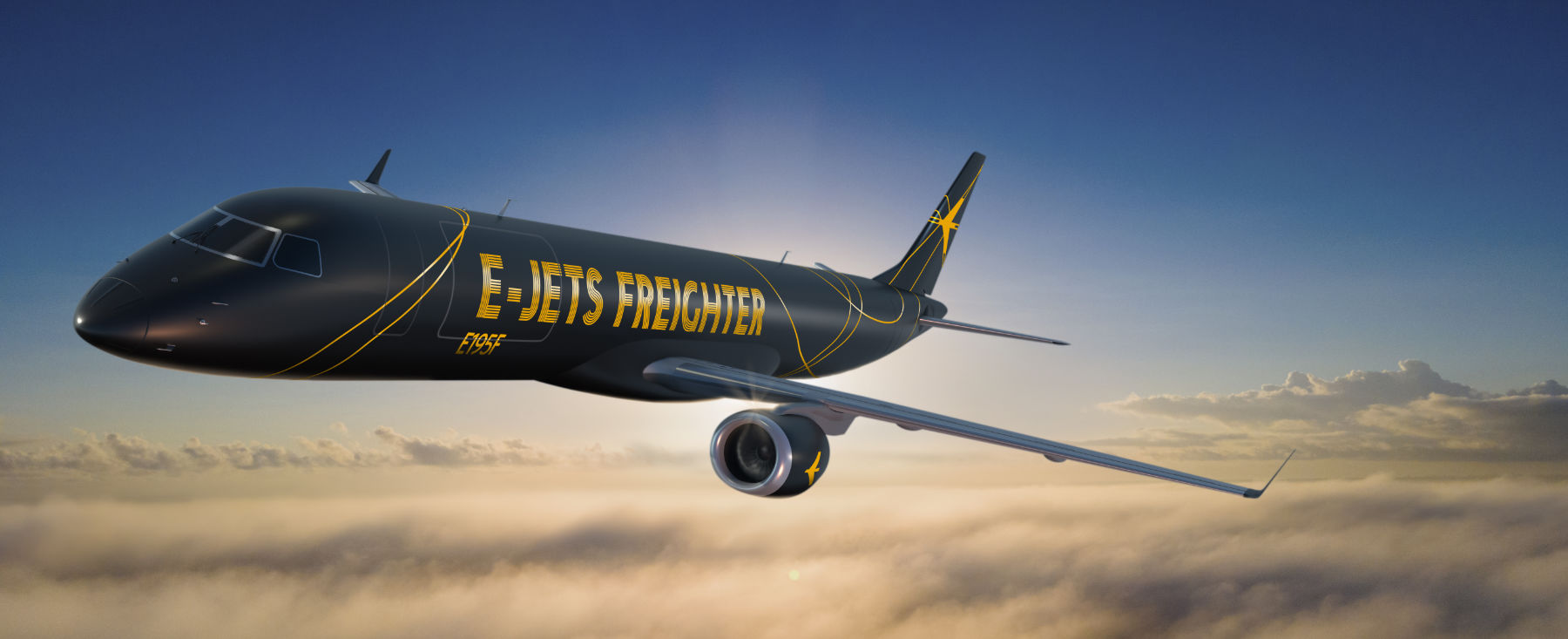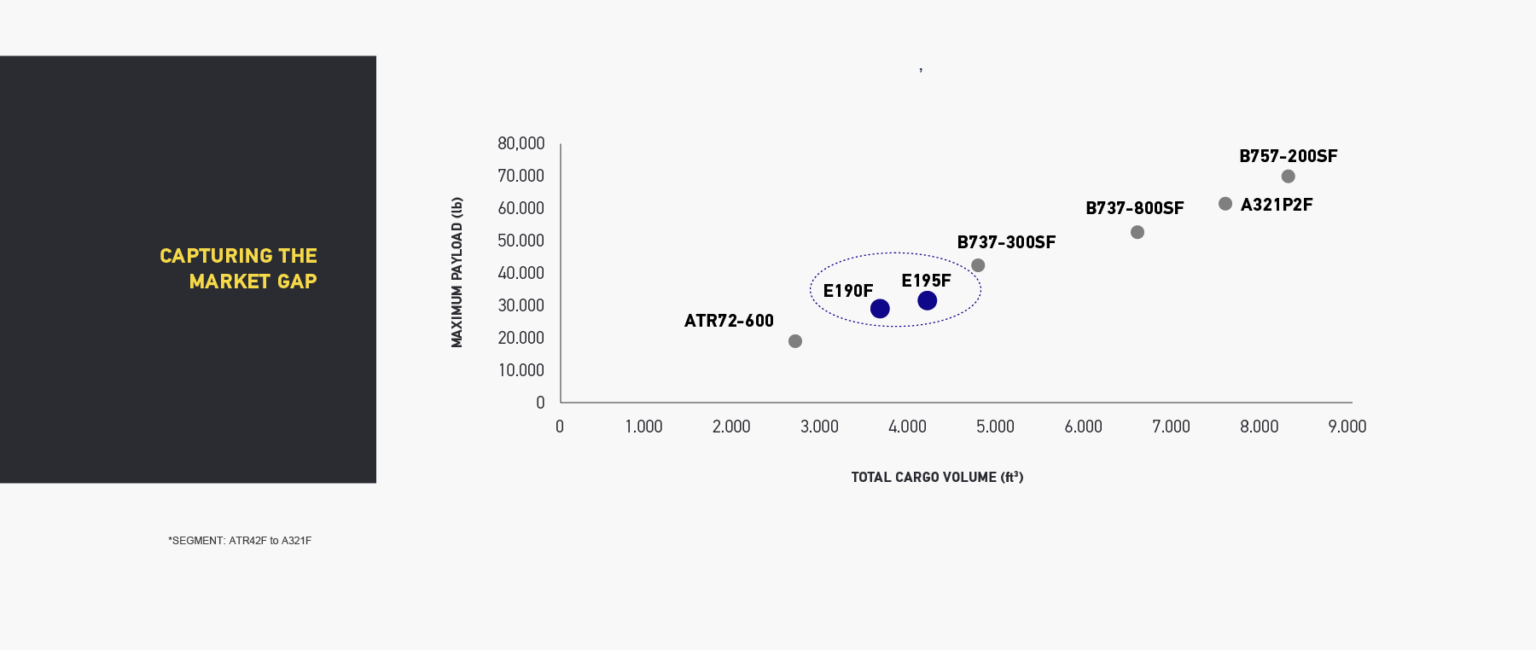Embraer launches the E-jet Freighter version (E190F and E195F) and announces temporary pause in the E175-E2
 |
| Rendered Image © Embraer - Disclosure. |
Embraer enters the air cargo transport market with the
launch of passenger-to-freighter conversions of the E190F and E195F (P2F) jets.
The E-Jets freighters are designed to meet the changing demands of e-commerce
and modern trade that require fast deliveries and decentralised operations.
Embraer is offering the unbeatable cargo economics and flexibility that rightsized jets provide.
“Perfectly positioned to fill the gap in the freighter
market between turboprops and larger narrowbody jets, our P2F E-Jet conversion
hits the market as the demand for airfreight continues to takeoff, and as
e-commerce and trade in general undergoes a global structural transformation,”
said Arjan Meijer, President and CEO Embraer Commercial Aviation.
The full freighter conversion is available for all pre-owned
E190 and E195 aircraft, with entry into service expected in early 2024. Embraer
sees a market for this size of airplane of approximately 700 aircraft over 20
years.
This initiative comes as Embraer addresses three major opportunities:
- Current small narrowbody freighter airframes are aged, inefficient, highly polluting, and well within their retirement window;
- The ongoing transformation of the intersection between commerce, trade, and logistics, has led to unprecedented demand for airfreight across the board, and more so for same day deliveries and decentralised operations; the perfect mission for E-Jet sized freighters;
- The earlier E-Jets that entered service around 10-15 years ago are now emerging from longterm leases and beginning their replacement cycle, continuing over the coming decade. The full cargo conversion will extend the life of the most mature E-Jets by another 10 to 15 years, and encourage their replacement with more efficient, more sustainable, and quieter aircraft.
Embraer’s E-Jet P2F conversions will deliver headturning
performance and economics. The E-Jet Freighter will have over 50% more volume
capacity, three times the range of large
cargo turboprops, and up to 30% lower operating costs than narrowbodies.
“The E-Jet air freighters will provide fast, reliable, and
cost effective service to freight forwarders, extend the revenue earning life
of E-Jets, support E-Jets’ asset values, and create a strong business case
encouraging the replacement of earlier aircraft with modern, more efficient,
passenger aircraft,” said Johann Bordais, President & CEO, Embraer Services
and Support. “With more than 1,600 E-Jets delivered globally, customers of this
new freighter segment will benefit from well established, mature, global
services network, in addition to a comprehensive portfolio of products ready to
support their operation from day one.”
The conversion to freighter will be performed at Embraer’s
facilities in Brazil and includes: main deck front cargo door; cargo handling
system; floor reinforcement; Rigid Cargo Barrier (RCB) – 9G Barrier with access
door; cargo smoke detection sytem, including class “E” extinguishers in upper
cargo compartment; Air Management System changes (cooling, pressurization,
etc); interior removal and provisions for hazardous material transportation.
The E190F can handle a payload of 23,600lb (10,700kg) while the E195F a payload
of 27,100 lb (12,300 kg).
Pause in the E175-E2 Jet Development Program
While Embraer launched the Ejet freighter, the Brazilian
manufacturer announced a relevant fact to its investors, shareholders and the
market that its Board of Directors approved a three-year pause in the E175-E2
jet development program.
As in previous years, the re-programing of activities is
associated with the ongoing US mainline scope clause discussions with the pilot
unions regarding the maximum take-off weight (MTOW) limitation for aircraft
with up to 76 seats, together with current global market conditions for
commercial aviation and the continuing interest in the current E175 jet in the
US market.
The Company expects to resume the program development
activities following the aforementioned period, which will result in a
re-programming of the aircraft entry into service between 2027 and 2028.
In keeping with its strategy of innovation and growth, the
Company will maintain its shareholders and the market duly informed about new
material information relating to the transaction.
*NOTE:
The aviation news website MAIS QUE VOAR (MORE THAN FLY) does not agree with Fakenews. This publication contains content with sources from Embraer press.
This publication was written in Portuguese (Brazil) and
automatically translated by Google robots to English. MORE THAN FLY, adopted
Google technology for everyone around the world to have access to information
and optimize our time and budget with translations. We ask for common sense to
take into account translation errors. After all, every robot is limited and is
never compared to the superiority of a human intelligence.





Nenhum comentário:
Postar um comentário